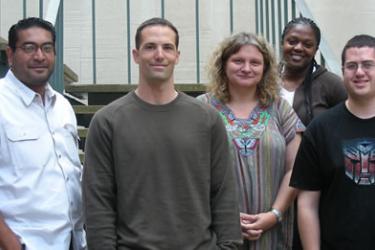
Project Description:
In the vertebrate brain, damage such as a stroke or mechanical injury leads to a pronounced wave of secondary degeneration. It is this secondary degeneration that is reflected in the symptoms typically associated with stroke. Understanding what about the primary injury causes the secondary degeneration is a key step towards limiting structural and functional deterioration. The locus of primary brain damage is a tumultuous environment with dramatically changing concentrations of many biochemicals. Of these, ionic flux occurs within the first two hours and is most likely responsible for changes in gene transcription associated with apoptotic cell death. Which ionic species, however, remains a mystery.
Drs. Saldanha and Tatic-Lucic will combine their expertise to model, manipulate, and measure the induction of apoptosis (qPCR) following rapid introduction and removal of cations (hydronium, calcium, potassium, magnesium) and anions (chloride and bicarbonate) in a flow chamber, in vitro system that contains primary-dissociated cultures of zebra-finch brain (neurons and glia). Notably, both these projects are anticipated to involve undergraduate students in a team-building, interdisciplinary project that seeks to understand a systems-level problem (cell death and survival) at the bio-electronic (ionic flux) and molecular biology (gene transcription) levels.
Project Year:
2008
Team Leaders:
Colin Saldanha, Ph.D.
Sveltana Tatic-Lucic, Ph.D.
Graduate Students:
Bradley Walters
Undergraduate Students:
Kevin Naranjo
Katrina Probherbs





